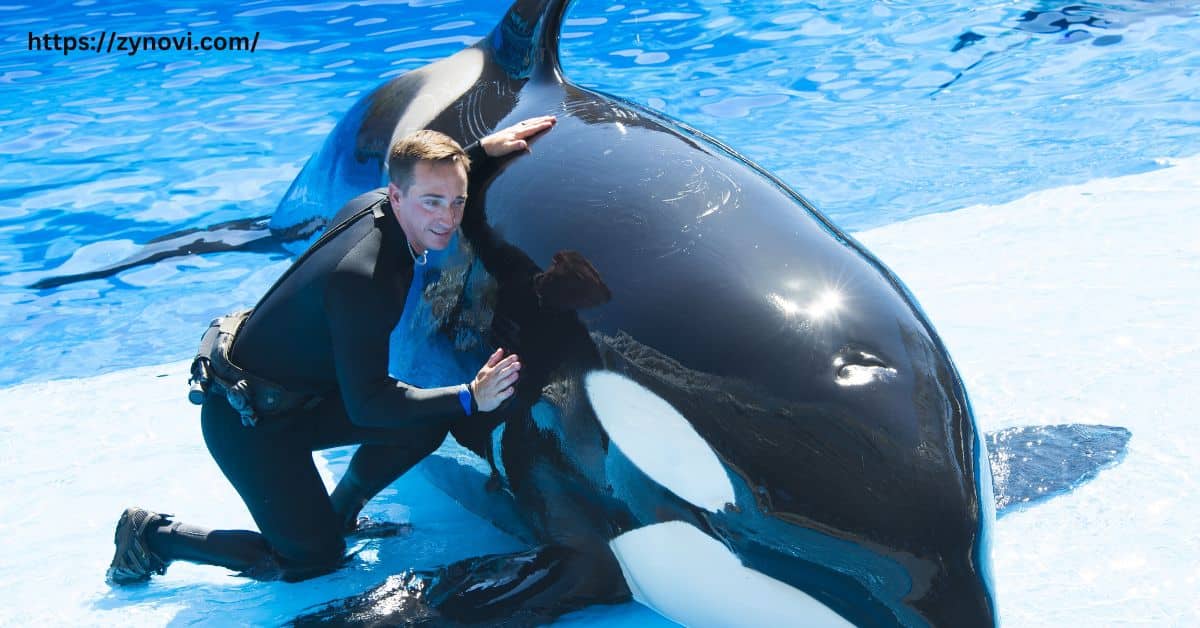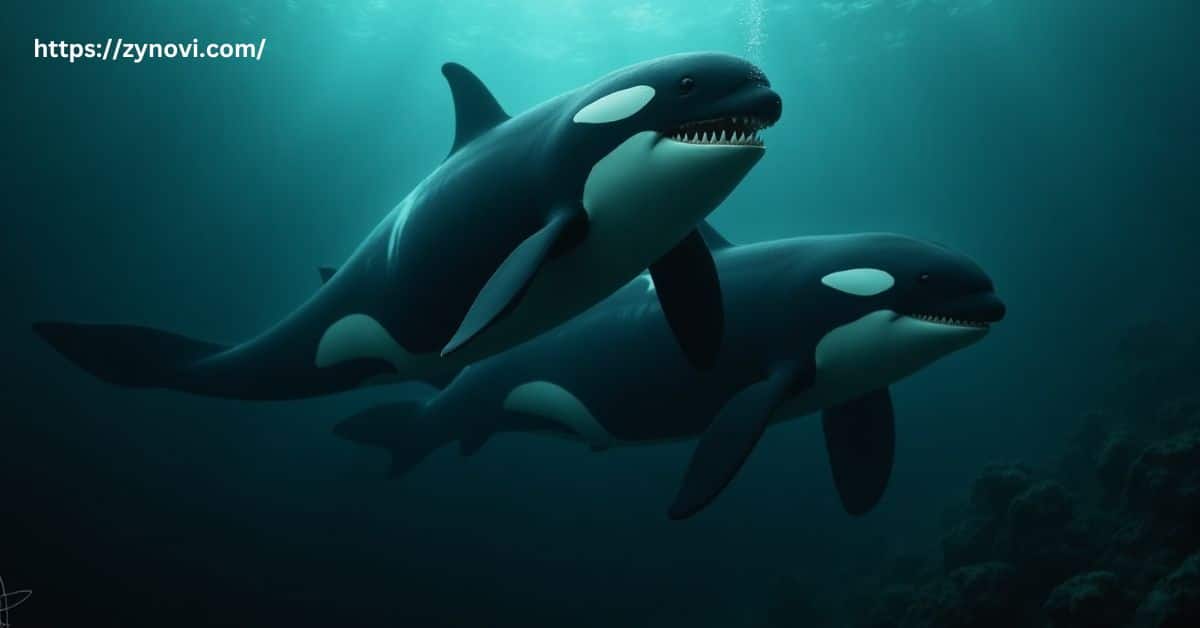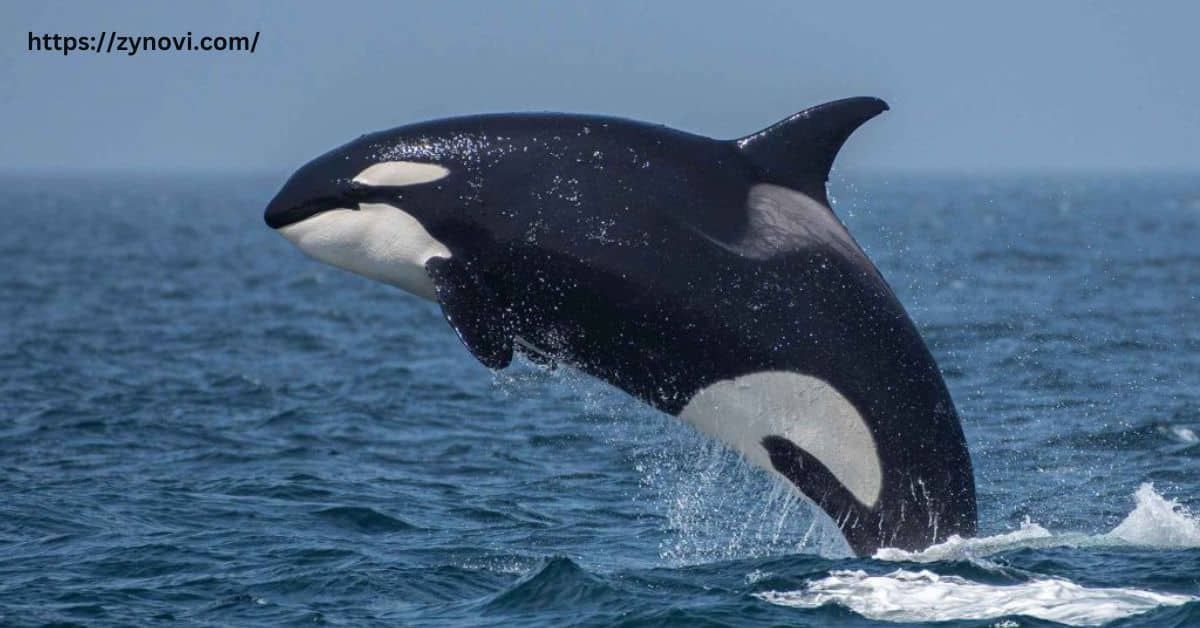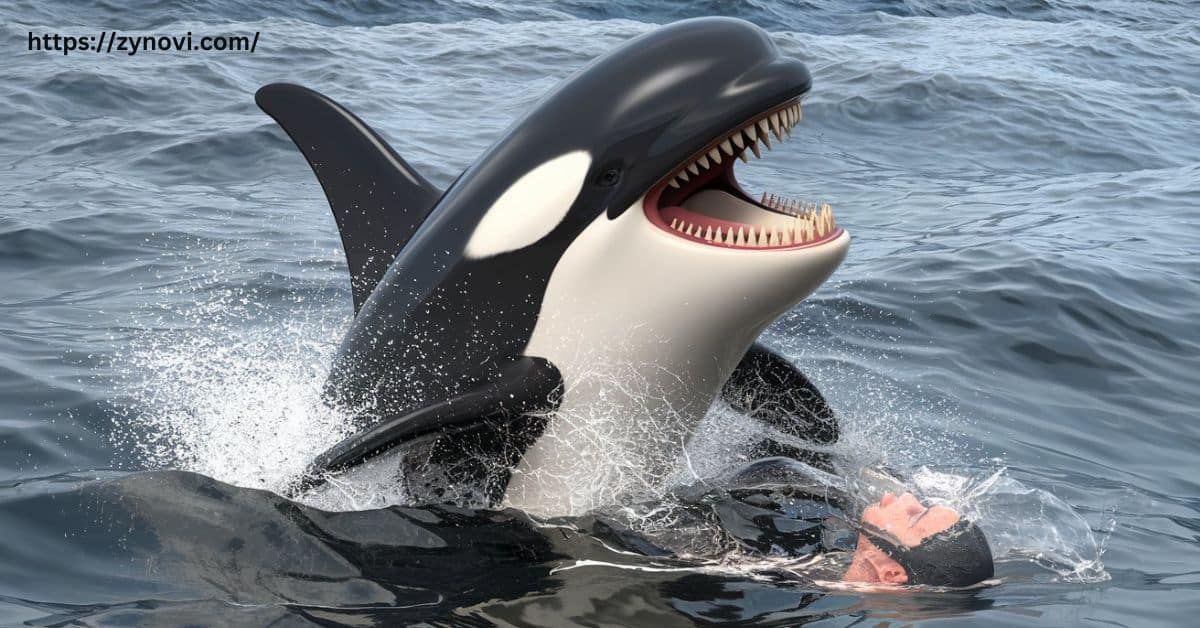Do Orcas Attack Humans? Orcas do not typically attack humans in the wild, and it’s usually due to stress or captivity-related factors.
It’s a question that sparks curiosity and even fear. These magnificent creatures, often called “killer whales,” have earned a reputation for being fierce predators in the wild. But is that reputation justified when it comes to humans?
While movies and documentaries have sensationalized orca behavior, the reality is far more fascinating and complex. In this article, we’ll explore whether orcas are a threat to humans, uncover the truth behind their interactions, and delve into the factors that influence their behavior.
What Are Orcas: Nature’s Apex Predators
Physical Characteristics of Orcas
Orcas, the largest members of the dolphin family, are easily recognized by their striking black and white coloration. Adult orcas can reach up to 32 feet in length and weigh as much as 6 tons.
Key physical traits include:
- Dorsal fins: Male dorsal fins can grow up to 6 feet tall, while females have smaller, curved fins.
- Teeth: Each orca has about 40-56 interlocking teeth, perfect for grasping prey.
- Streamlined bodies: Designed for speed, orcas can swim at up to 34 mph, making them one of the fastest marine predators.
Orca Social Structure and Behavior
Orcas are highly social animals that live in matrilineal pods. These pods, led by a matriarch, consist of multiple generations. They exhibit strong family bonds, and individuals rarely leave their pod for life.
Behavioral Highlights:
- Cooperative hunting: Orcas use teamwork to corner prey, showcasing strategic planning.
- Caring for pod members: Orcas assist injured or weak individuals, a rare trait in the animal kingdom.
- Cultural learning: Pods develop unique hunting techniques and vocal dialects passed down through generations.
Intelligence and Communication in Orcas
Orcas are among the most intelligent marine animals, with advanced cognitive abilities and intricate communication systems.
Key Facts About Orca Intelligence:
- Vocal communication: Orcas produce clicks, whistles, and pulsed calls, with unique “dialects” specific to their pods.
- Problem-solving: Wild orcas have been observed using tools and adapting strategies to overcome challenges.
- Emotional intelligence: Orcas display grief, joy, and social bonding, highlighting their emotional depth.
Do Orcas Attack Humans in the Wild?

Orcas rarely attack humans in the wild, with most encounters being non-aggressive and marked by curiosity. Their behavior towards humans is generally peaceful, reflecting their intelligence and social nature.
Historical Context of Orca-Human Encounters
In the early 19th century, sailors referred to orcas as “killer whales” after observing them hunt large whales. However, these observations were misinterpreted as dangerous behavior toward humans.
Historical records of orca-human interactions reveal minimal aggression. Indigenous peoples, such as the Māori and Coast Salish, revered orcas as protectors or spiritual guides.
Modern-Day Encounters
In modern times, encounters between orcas and humans are rare and usually peaceful. These intelligent creatures often display curiosity rather than aggression, frequently approaching boats, kayaks, or snorkelers out of interest.
For instance, wild orcas in areas like California or New Zealand have been observed swimming near humans, showing no hostile behavior.
These interactions highlight their inquisitive nature, contrasting sharply with the myths of dangerous “killer whales” often sensationalized by media narratives.
Case Studies of Orca Interactions
Here’s a table summarizing the case studies of orca interactions:
| Incident | Location | Orca Behavior | Human Interaction |
|---|---|---|---|
| Kayak Incident (2015) | California, USA | Playful, swimming beneath kayaks without aggression | Orcas approached but displayed no hostility, focused on playful behavior |
| Snorkeler Incident | New Zealand | Calm, circling with gentle curiosity | Orca circled snorkeler, exhibiting calm observation before swimming away |
Both incidents reflect orcas’ curiosity and playfulness, proving that their interactions with humans are rarely aggressive. These behaviors emphasize the peaceful nature of wild orcas, defying their “killer whale” reputation.
Understanding Incidents in Captivity

Stress and Confinement in Captivity
Captivity profoundly impacts orca behavior, restricting their natural instincts and activities. In the wild, orcas are known to travel up to 100 miles daily, exploring vast ocean territories and engaging in complex social behaviors.
However, in marine parks, their environment is confined to small tanks that severely limit movement and stimulation.
This unnatural lifestyle often results in stress, isolation, and frustration, leading to aggressive outbursts that are rarely observed in wild orcas.
High-Profile Cases of Captivity-Related Aggression
Tilikum at SeaWorld
Tilikum, a male orca at SeaWorld, was involved in three human fatalities, including a trainer in 2010. Experts attribute Tilikum’s behavior to stress and frustration caused by decades of confinement.
Keto in Loro Parque (2009)
Keto, another captive orca, killed a trainer during a training session. Investigations revealed that Keto’s isolation and stress played a significant role in the incident.
These tragic cases underscore the ethical concerns surrounding orca captivity.
Ethical Considerations in Captivity
The practice of keeping orcas in captivity raises profound ethical dilemmas. Critics argue that no enclosure can replicate the vastness of the ocean or provide the social and physical stimulation that orcas need.
Ethical Alternatives:
- Sanctuaries: Sea sanctuaries offer a more natural environment for retired captive orcas.
- Virtual experiences: Technologies like VR can allow people to experience orcas without captivity.
Media Influence and Misconceptions About Orcas
The “Killer Whale” Misnomer
The label “killer whale” stems from sailors who observed orcas hunting large whales in coordinated groups.
While the name suggests danger, orcas are not inherently aggressive toward humans and are vital for maintaining balance in marine ecosystems by controlling prey populations.
Media Sensationalism
Popular media, including movies like Jaws, often exaggerate orcas as fearsome predators, fostering unnecessary fear.
However, documentaries like Blackfish have changed public opinion by shedding light on the emotional toll and behavioral changes orcas experience in captivity, challenging the “killer whale” stereotype.
The Ecological Significance of Orcas

Orcas as Apex Predators
Orcas hold the top position in the marine food chain, playing a crucial role in regulating prey populations like seals and sea lions. This regulation prevents overgrazing of fish stocks, which is essential for sustaining healthy marine ecosystems and biodiversity.
Conservation Efforts for Orcas
Although orcas play a vital role in maintaining ocean health, they face significant challenges from human activities. Pollution, including plastic waste and chemical runoff, threatens their habitats and food sources.
Overfishing reduces prey availability, while habitat degradation disrupts their ecosystems. Conservation efforts focus on creating marine protected areas, reducing ocean pollution, and advocating for sustainable fishing practices.
These initiatives aim to protect orcas and ensure the balance of marine ecosystems for future generations.
Conservation Strategies:
- Protecting habitats: Establishing Marine Protected Areas (MPAs) ensures orcas and their prey have safe spaces to thrive without human interference.
- Reducing pollution: Tackling plastic waste, chemical runoff, and noise pollution helps improve the health of marine ecosystems.
- Responsible tourism: Promoting ethical whale-watching practices minimizes stress on wild orcas and raises awareness about their conservation needs.
FAQs
Are orcas aggressive with humans?
No, orcas are not naturally aggressive toward humans and rarely pose a threat in the wild.
Is it safe to swim with an orca?
Swimming with orcas can be risky due to their size and unpredictable nature; always follow local guidelines.
What to do if an orca approaches you?
Stay calm, avoid sudden movements, and observe from a safe distance without disturbing the animal.
Has a killer whale ever killed a human in the wild?
No, there are no documented cases of orcas killing humans in the wild.
Conclusion: Do Orcas Attack Humans?
Orcas do not naturally attack humans in the wild, and their rare aggressive behaviors in captivity are typically tied to stress, confinement, and lack of stimulation. These highly intelligent and social creatures deserve our respect and deeper understanding, not fear.
Orcas play an essential role in maintaining the balance of marine ecosystems as apex predators. By supporting conservation efforts, reducing threats like pollution and habitat loss, and promoting ethical practices such as responsible whale-watching, we can foster a future where humans and orcas coexist in harmony, appreciating their role in ocean health.










